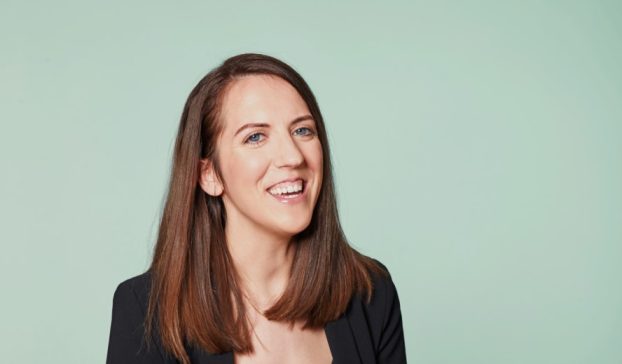Despite what you might have heard about the sky falling on the broadcast television industry this year, Canada’s major networks are marching bravely on toward the launch of the fall TV season. Sure, things have been delayed and complicated by the U.S. writers’ strike, which caused fewer pilots to be produced and left network execs scrambling to fill their schedules. The threat of a strike by the Screen Actors Guild looms over many shows’ production schedules. And, yes, people – especially teens – are increasingly watching content online.
But things may not be quite as dark as they seem. The writers’ strike actually provided a ratings boost for the CBC, which does not rely on U.S. programming, and helped get Canadian-produced shows like The Listener, Sophie, Flashpoint and Little Mosque on the Prairie picked up by content-hungry American networks. A number of shows may be able to weather an actors’ strike if it comes, since networks delayed the mid-season launches of shows like <>iHeroes and 24 to get a jump on the fall, while others, like House, ER and CSI, have been shooting for weeks and have a number of episodes in the can.
It turns out that many people did not in fact turn off their TVs during the strike. And there are multitudes of things broadcasters can do to win back those who did, as well as those straying toward other media.
‘A lot of it is just getting people back into that habit of watching,’ says Rick Lewchuk, SVP creative agency and brand strategy for CTVglobemedia. ‘We have traditions in television – you start in the fall and watch through the winter, and while different things launch, you’re able to continue that flow. Well, there was an interruption to that flow, and we weren’t able to keep the rhythm. We tried to get people back in the spring, but it was difficult.’
Serial dramas tended to suffer more than comedies did from the strike, as viewers lost track of their complicated storylines. To bring Lost fans up to speed, for instance, CTV added explanatory subtitles to reruns and streaming episodes to ctv.ca.
‘We had a piece called ‘Lost in 815’ on ctv.ca,’ says Lewchuk. ‘Everything you needed to know about Lost you learned in eight minutes and 15 seconds. And we’re looking at doing more things to allow people to catch up. You don’t want them to feel that if they didn’t watch Desperate Housewives in the spring, there’s no point watching it anymore.’
Lewchuk says CTV’s ad spend will be up this year in an effort to win back viewers, push new programs and expand its re-branded A, which will air U.S. shows like Eleventh Hour and Fringe. And its media mix is changing.
‘We used to spend the majority of our budget on print, but that was when you had TV guides that people went to,’ says Lewchuk. ‘The Internet is one thing we use more, depending on what we’re promoting. We use radio quite effectively, and are doing more cross-promotion with our 30+ channels.
‘Take Canada’s Worst Handyman 3. The third version was the highest launch Discovery ever had. The strongest increase was in the younger audience, which made sense, because it was the first time we had promos on MuchMusic and MTV and the Comedy Network.’
CTV’s fall promotion actually begins this month with the early launch of Flashpoint, a Toronto-set police drama. ‘It’ll be heavy on television, but there’ll be an outdoor aspect, a web presence and a lot of radio,’ says Lewchuk. ‘And we’ll be running trailers in theatres, because a lot of people go to movies at this time of year, and the subject matter has the feel of a movie.’
Lewchuk thinks fears of a generation gap in which people under 30 prefer to watch content online are overblown. ‘What’s going to combat that as much as anything is high-definition TV,’ he says. ‘My kids don’t often watch TV with me, but when Lost comes on, they come down to the family room to watch it in HD. You can’t get that quality on a computer.’
He also values the watercooler effect. ‘People still go into the office on Friday and talk about what happened on Grey’s Anatomy, and if you recorded it to watch on the weekend, you’re left out,’ he says. ‘We are creatures of community, and we like to have shared experiences. It’s a challenge to get viewers back, but it’s definitely doable.’
John Bozzo, ED, English communications at CBC Television, also feels that TV and online are complementary channels. ‘People are getting entertainment programming online as well as on TV,’ he points out. ‘Our job is to make sure they’re choosing CBC, regardless of the platform.’
The pubcaster has been putting more content online, including webisodes, streaming shows and podcasts, and expanding mobile deals with telcos and Apple. Its marketing budget hasn’t increased, but the mix has shifted slightly from OOH to online, and there’s a new emphasis on focused targets.
‘Over the past two years we’ve been much more selective about where we’re buying,’ says Bozzo. ‘I can reach our news audience by putting promos on air, but 35- to 49-year-old women who like drama are not watching in great numbers. So we’re doing more stunt events and PR activity to reach people where they are.’ That has included retail and transit promotions for Little Mosque – in which cookies and Turkish coffee were handed out at stores and subway stations, for example – and airport pillars to reinforce The Border’s subject matter.
Not surprisingly, Rogers Media is boosting its marketing budget now that it has taken control of the Citytv and Omni stations. ‘I think you’ll see an expansion in all areas, especially online,’ says Malcolm Dunlop, EVP programming. ‘We’ve got an aggressive plan for the fall to ensure that we continue to increase our ratings.’
At Canwest, the ad spend is also up, partly because the net bought the Alliance Atlantis channels. ‘Obviously there’s an increase,’ says Canwest Broadcasting CMO Walter Levitt. ‘But we’re looking at how we can most effectively spend our money. One thing we’re doing well is cross-promoting. If there’s a big priority, whether it’s on Global, E!, HGTV or Showcase, we’re getting all our assets behind it.’
Canwest’s mix is also changing, but not drastically. ‘TV is still the most effective way to market television,’ says Levitt. ‘Online is a larger percentage of our spend, but still relatively small. We allocate a portion to buzz marketing initiatives. They may not have the reach of television, but for those who see them, they have tremendous impact.’
As do retail partnerships. ‘We’re doing a promotion with Orville Redenbacher,’ says Levitt. ‘In August and September, consumers buying popcorn will get a DVD with episodes of returning shows and material promoting the new season.’
Canwest plans to mount a large-scale campaign to bring back viewers of shows like Heroes, House and The Office, with subway dominations, OOH, radio and online as well as TV, and capitalize on the buzz surrounding the fall’s new shows, particularly the new 90210.
‘The interesting thing about 90210 is its broad appeal,’ says Levitt. ‘Obviously it’s going to appeal to teenagers, but the opportunity beyond that involves the fans of the original series who are now in their 30s and 40s. We put it on after House, the biggest show in the country, and we think the excitement among people who watched the original is going to be enormous.
‘Over the summer we’ll be promoting it though multiple pieces of creative on air, and we’ll use every episode of House to get people to stay. Beyond that, we’ll use radio, outdoor, online and some buzz marketing to get the street talk going. Ultimately it’s about getting a huge amount of sampling for that first episode.’
Canwest is also contemplating mall-oriented efforts for E!’s Instant Beauty Pageant, advance screenings of the first new 24 episode for diehard fans and a slew of promotions for the mid-season launch of Howie Mandel’s new show, Howie Do It.























